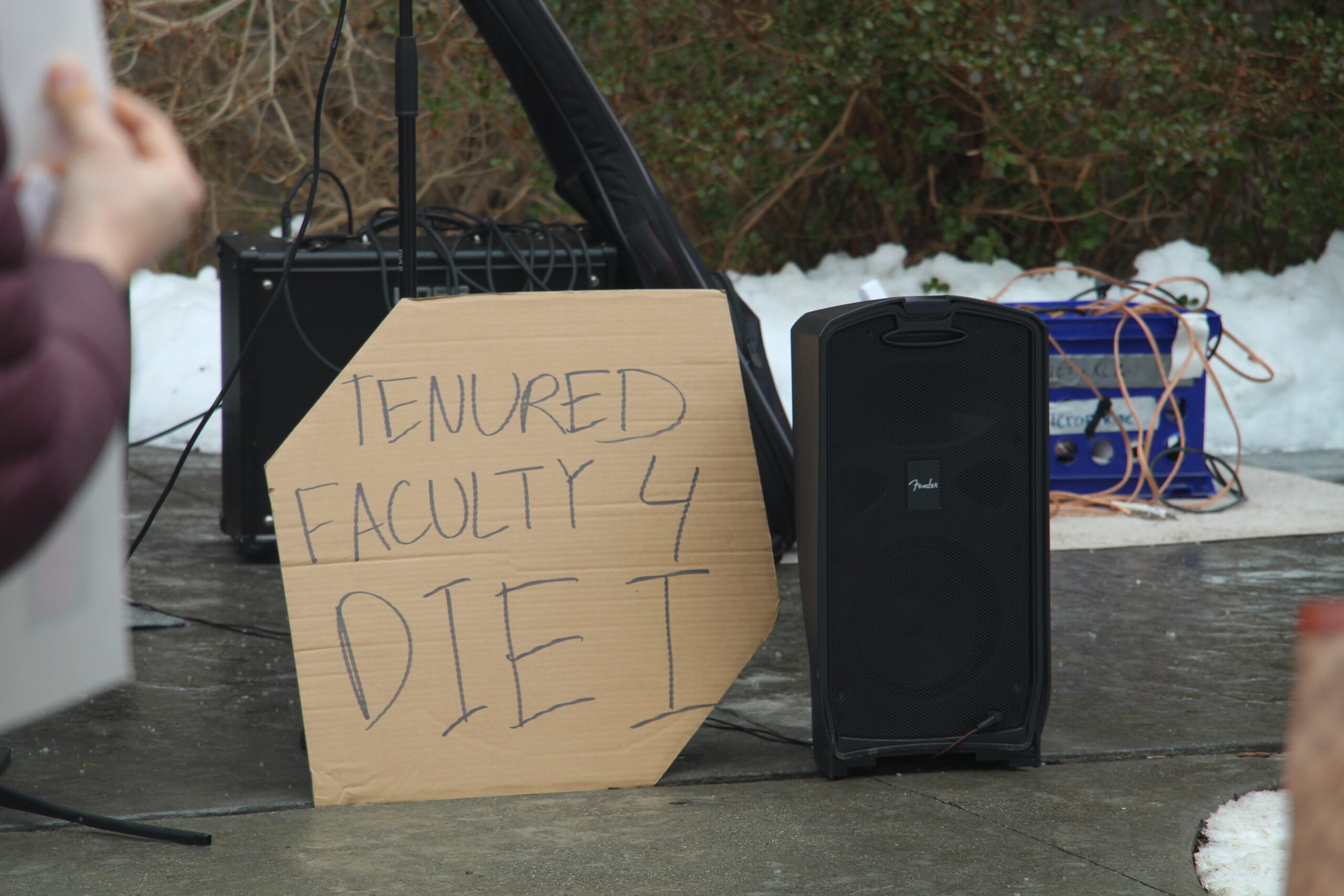Recently, the Conn student body has been flooded with emails and flyers advertising information sessions and discussion panels about the reformed general education curriculum, known as “strands” or “pathways.”
While first years will not recall this, we’ve witnessed the seemingly interchangeable use of the strand/pathway terms for the past year with little clarification as to which term is actually correct. Now, however, the general education replacements have officially been termed “pathways.”
Perhaps because the pathway program will not be implemented until the Class of 2020’s arrival, general student understanding of the pathway program is pretty limited. Most students’ knowledge does not exceed the facts that no, the program will not start until the next crop of first-years turns up, and yes, this does mean that they still have to take a history class.
I wanted to make up my own mind about the pathway program without attending an official planning workshop, so I went to a presentation regarding a single pathway: a sustainability and social justice concentration with an option to travel to an autonomous university in Chiapas, a state in southern Mexico.
Rather than explain the entire pathway program in broad terms, the presentation informed students and faculty about the concept by way of a specific example.
According to Professor Chad Jones of the Botany department and the Office of Sustainability, the pathway “began as a collaboration between CCSRE and the Office of Sustainability.” Professor Jones explained that pathways focus on a central “theme or guiding question,” and this one would stress the intersectionality between sustainability and social justice.
Ideally, some students in the pathway would study abroad in Chiapas by working collaboratively with UniTierra, an autonomous university for 12-18 year olds in San Cristóbal de las Casas, Chiapas. Professor Leo Garofalo of the History department noted: “UniTierra is not designed to educate our students at the College,” but rather focuses on maintaining autonomy and educating their own students.
I can imagine where Conn students would run into issues with this notion, especially considering the majority of students’ privileged backgrounds. That being said, if executed properly, this program could help change that.
Josh Stoffel, Chair of Staff Council and member of the Office of Sustainability, defined UniTierra as “a technical school and a liberal arts school coming together in one place,” but added that Conn students would find it to be a vastly different world, explaining that “they only have power in eight-hour blocks twice a day” and that the computers operate on Windows ’98.
As with any endeavor to immerse privileged college students in a comparatively underdeveloped community, with the Chiapas program, we run the risk of sending students to Mexico under the impression that they are there to perform charity work. Particularly because Conn students at UniTierra will not take classes, but rather will learn about sustainability and social justice through real-world observation and experience, there is an elevated risk of U.S.-centric mindset of superiority.
In an effort to prevent this problematic attitude, a group of faculty and staff, including Professor Jones, Professor Garofalo and Stoffel, traveled to Chiapas over the summer. Their mission was both to experience the place where they eventually hope to send students and to form relationships with existing local organizations.
Professor Garofalo noted that the faculty “met with human rights conflict resolution groups” and a San Cristóbal-based museum “to think about projects students could do there to help with some of the cataloging.”
Deb Brunetti, a CELS adviser who also went on the faculty trip, commented that although students would hopefully make a positive contribution, “You can’t approach these things as if you are helping anyone. You have to be walking with them.”
CISLA director and history professor Marc Forster warned against the danger of “English-speaking tourism” in the Chiapas endeavor and pointed out that “we need to make it clear…that this can’t be done in a half-baked way.” Stoffel added that ideally, “if we are going to do this sort of work, [participants] must speak the language to a fluent level.” While that would be wonderful, I find it hard to imagine that through conventional language education, Conn would be able to bring all participants in the program up to that level.
Although proficiency in Spanish would prove essential for students who choose to embark on the Chiapas trip, Professor Jones noted that studying in Chiapas would be an optional complement to, rather than a required component of, the sustainability and social justice pathway.
Of course, this creates the opportunity for faculty to put the Chiapas project–a side-focus–on the backburner; to the opposite effect, faculty might prioritize students interested in traveling to Chiapas and neglect students who wish to focus on other projects.
“It’s not meant to be the sustainability and social justice pathway that deals with Chiapas,” Professor Jones commented. The pathways, he explained, would require four courses: one “thematic introduction” and three others, each of which interrogate distinct “modes of inquiry.”
This would allow students to create more flexible schedules as they pursue both their pathways and their majors. Ideally, the pathways would tie required “modes of inquiry” together using common interests.
“Key in our pathway is the idea of global and local engagement,” noted Professor Jones, clarifying that even math and science courses taken as part of the pathway would have this emphasis. While not a requirement of the pathway itself, the Chiapas trip would incorporate this focus.
In the case of a lack of investment on either the student’s or the instructor’s end, the Chiapas trip could end up being an unproductive endeavor lacking in cultural and linguistic immersion. If executed properly, however, the program could help students form global relationships and gain awareness because as Professor Garofalo pointed out, “most of the world is more like southern Mexico than it is like Connecticut College.”









